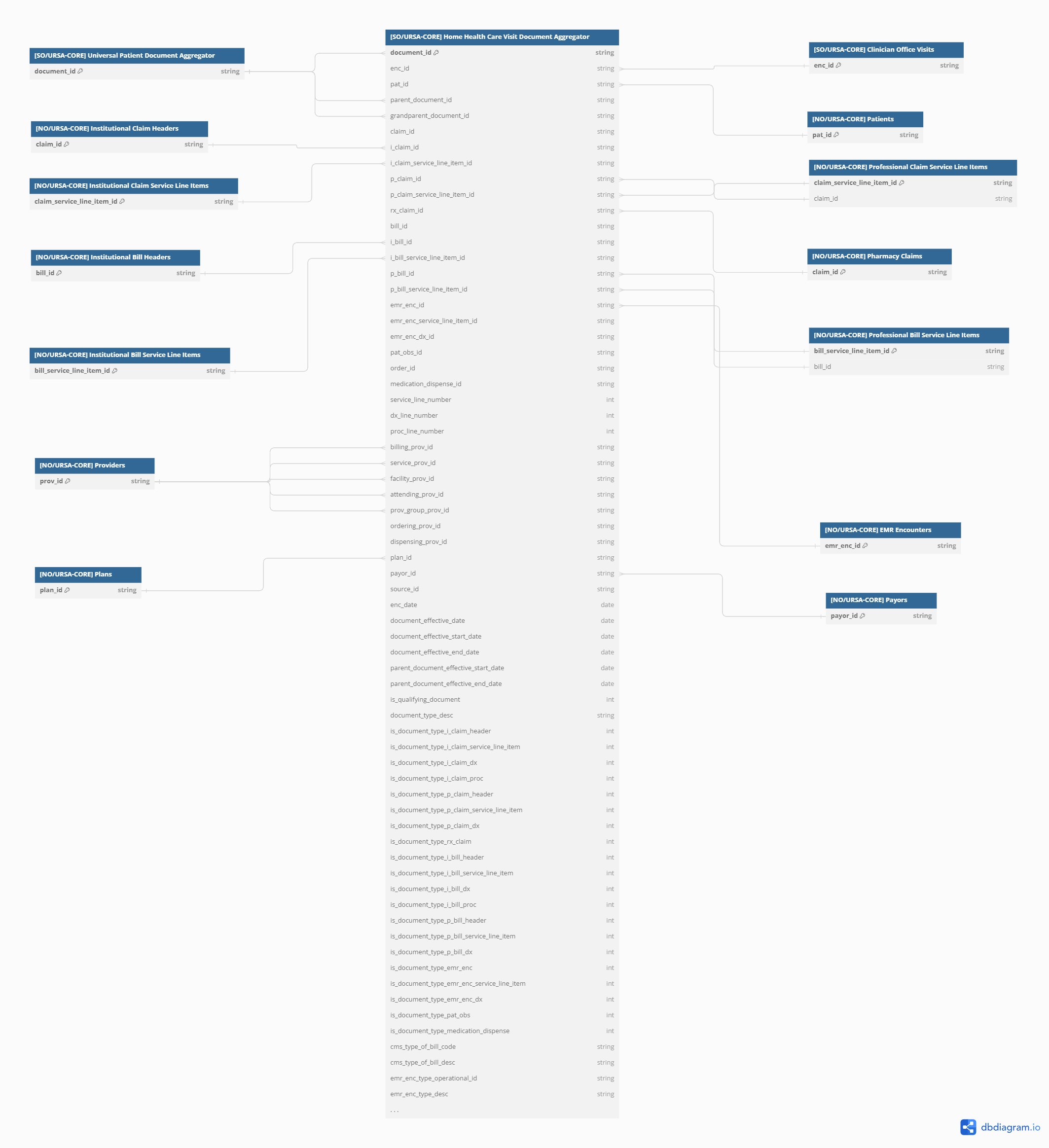Home Health Care Visit Document-Encounter Pairs
- 19 Apr 2024
- 1 Minute to read
- Print
- DarkLight
Home Health Care Visit Document-Encounter Pairs
- Updated on 19 Apr 2024
- 1 Minute to read
- Print
- DarkLight
Article summary
Did you find this summary helpful?
Thank you for your feedback!
Object Description
Collects information about home health care visits; contains documents uniquely related to one or more home health care visits. (Note that when a single institutional claim or bill header covers multiple visits, the header and associated diagnosis documents appear multiple times, once each for each encounter they are associated with.)
Metadata
- Table Name: ursa.so_ursa_core_enc_110
- Layer: SYNTHETIC_OBJECT
- Object Type: Integrator
- Temporal Class: Event
- Case ID: Document ID, Encounter ID
- Event Date: Encounter Date
- Primary Key: Document ID, Encounter ID
Relational Diagram

Dedicated Precursors
- [SO/URSA-CORE] Home Health Care Visit Document-Encounter Pairs, Precursor 1 (Qualifying Documents): One record per professional claim or bill service line item, institutional claim or bill service line item, or EMR encounter record providing qualifying evidence that a home health visit took place.
- [SO/URSA-CORE] Home Health Care Visit Document-Encounter Pairs, Precursor 2 (All Master Documents): One record per document associated with a home health visit encounter as a master document; additionally includes records that would not alone qualify for an encounter of this type, but which match to one that does.
- [SO/URSA-CORE] Home Health Care Visit Document-Encounter Pairs, Precursor 3 (Non-Master Institutional Bill or Claim Headers): One record per institutional bill or claim header record that is the parent to a qualifying institutional bill or claim service line item but not identified as a master document for this encounter; used to augment the final set of document-encounter pairs with institutional bill or claim header and discharge diagnosis records; these would otherwise be omitted because they are not masters nor descendants of a master document in the encounter (because the header and diagnosis records are associated with multiple home health encounters).
Was this article helpful?
.svg)
